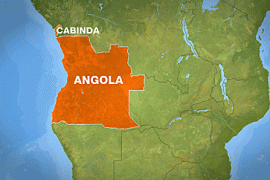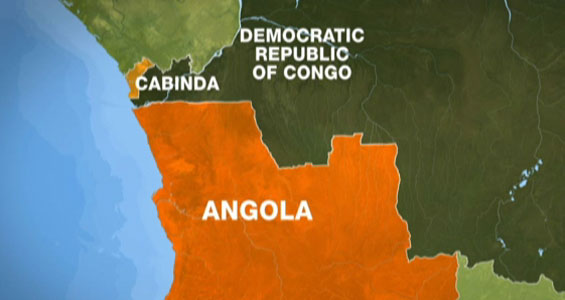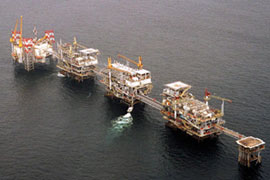Profile: Cabinda separatists
Several groups are fighting for the independence of the oil-rich Angolan region.

 |
A number of separatist groups are demanding independence for Cabinda, a province of Angola separated from the rest of the country by a thin strip of the Democratic Republic of Congo.
About one dozen organisations, three of them armed, are believed to be operating in the enclave, according to the GlobalSecurity.org website.
Several movements sprang up advocating a separate status for Cabinda while it was a protectorate of Portugal.
In 1963, three of them, the Movement for the Liberation of the Enclave of Cabinda (MLEC), Action Committee of the Cabinda National Union (CAUNC), and the Mayombe National Alliance (ALLIAMA), merged to form the The Front for the Liberation of the Enclave of Cabinda (FLEC).
This group was the forerunner of the one that claims to have carried out an attack on a bus carrying the Togo national football team as it arrived in Cabinda for the 2010 Africa Cup of Nations tournament.
Independence
When Angola was handed independence by Portugal in 1975, Cabinda, which includes the former kingdoms of Kakongo, Loango and N’Goyo, was made one of its 14 provinces.
But Cabindan separatists claimed, and continue to argue, that the enclave has its own distinct and separate identity, history and culture.
FLEC constituted its own provisional government, proclaiming Cabinda’s own separate independence from Portugal on August 1, 1975, with Luiz Ranque as the president.
However, Angolan government forces, backed by troops from Cuba, took control of the province.
FLEC soon fractured, with a number of splinter groups breaking away in the years following Angolan independence.
The movement broke into three factions in 1975 – Flec-Ranque Franque; FLEC-N’Zita, led by Henrique Tiaho N’Zita, and Flec-Lubota, led by Francisco Xavier Lubota.
In November 1977, the Military Command for the Liberation of Cabinda was organised, while in June 1979 the Armed Forces for the Liberation of Cabinda esablished another, the Popular Movement for the Liberation of Cabinda (MPLC).
In the 1980s, a group calling itself Uniflec received help from the National Union for the Total Independence of Angola (Unita), which opposed the MPLA-controlled government in the country long-running civili war, and from South Africa.
FLEC reformed
The original FLEC was reformed in the 1990s, and two factions were created; FLEC-Renovada (Renewed Front for the Liberation of the Enclave of Cabinda) and FLEC-Armed Forces of Cabinda (FLEC-FAC).
 |
| About 60 per cent of Angola’s oil is produced off the coast of Cabinda [AP] |
Between May and August 1997, FLEC fighters mounted at least 15 attacks on military targets in Cabinda, Globalsecurity.org, said.
Heavy fighting was reported in Tandu-Zinze, Buko-Zawu and Belize, in the north of the province.
The situation then quietened until 1999, when FLEC started to target foreigners, kidnapping a number of construction and oil workers, in an attempt to gain international attention for its independence fight.
Cabinda is important to the Angolan economy, wth oilfields off its coast estimated to account for about 60 per cent of the country’s output. However, many Cabindans complain that the oil wealth fails to find its way back to the people.
In October 2002, the Angolan military claimed it had destroyed Kungo-Shonzo, FLEC-FAC’s main base, and just months later it declared that it had also captured the base of FLEC-Renovada.
The following year, General Armando da Cruz Neto, the Angolan military chief of staff, said: “We are in a position to state that there have been significant changes in Cabinda’s military situation as a result of operations carried out by our armed forces.
“FLEC-Renovada has ceased to operate since late 2002.”
Ceasefire deal
But then in 2004, the two factions re-emerged, announcing that they were uniting “to negotiate with the [Angolan] government under a single banner”.
However, they split again in 2006 after Antonio Benita Bembe, a FLEC leader, signed a Memorandum of Understading with the government in Luanda.
“We’re going to sign a ceasefire with the Angolans who in return have accepted the principle of granting special status to Cabinda,” Bembe said.
N’Zita Tiago, the president of FLEC, claimed that Bembe did not represent his group’s interests and refused to sign and endorse the peace agreement.
The peace deal has failed to stop the attacks and in recent months FLEC has claimed a spate of attacks on the military and foreign oil and construction workers in the province.